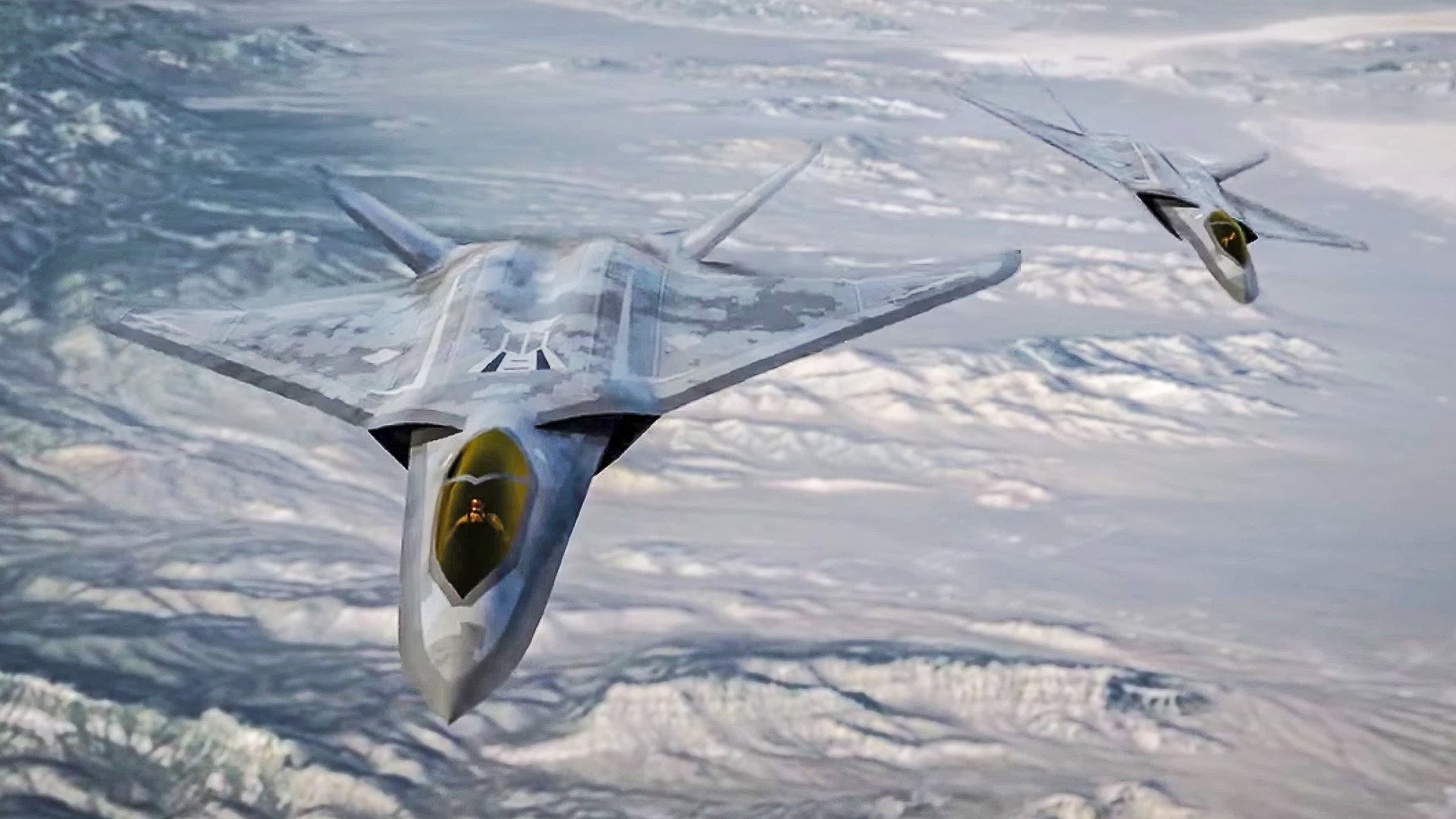There’s lots of hype going around regarding Lockheed Skunk Works’ most recent promotional video that seems to have been released to coincide with the 70th anniversary of the United States Air Force. The commotion surrounds what some say appears to be a 6th generation fighter concept—one that looks a hell of a lot like Northrop’s passed over YF-23 Black Widow Advanced Tactical Fighter. The thing is that this isn’t a new concept at all, it first appeared in video nearly four years ago in another Skunk Works sizzle reel and I did a little post on it then noting its likeness to the YF-23. The message couldn’t have been stranger: “the future of air dominance is a refreshed 25 year old competitor’s design!”


The video released just days ago called “Skunk Works—On the Path to 75 Years of Innovation” features the design once again:

Let me just make this crystal clear—there shouldn’t be another manned fighter, it is a waste of resources and will likely put our country at a serious disadvantage, not the other way around. For those who scoff at that statement, please read this in full, it may change your viewpoint on the issue.
With that said, if there is going to be a 6th generation fighter, and assuming the money will materialize for such a program even though the F-35 isn’t even fully operational yet, it will feature elements that I have been begging for for years—ones that are not really fighter-like at all. These include longer range, greater payload, broadband low observability, enhanced sensors carrying and networking capabilities with a focus on battle management and unmanned aircraft control, and possibly higher sustained cruise speed. In other words, something more akin to the tailless and enlarged FB-22 concept that should have been built years ago than anything else. The ability to support directed energy weapons will also be a factor, at least for defensive purposes. Maneuverability and the traditional tactical fighter concept as we know it today—one defined by short combat radiuses, dogfighting, and the addiction to tanker gas—would be no more.
Northrop Grumman’s Next Generation Air Dominance (NGAD) concept seems to largely embrace this new, more rational albeit less sexy requirement set for a manned tactical jet. And to a large degree, the YF-23 had more in common with these requirements than its competitor, the YF-22. But the F-22 won the Advanced Tactical Fighter competition and it did so for a number of supposed reasons, although officially the fine details as to why remain classified.

Generally these reasons are known to include in part the maturity of the F-22 prototypes and their impressive overall level of systems integration—supposedly an indicator of lowered developmental risk. It also seems that the super maneuverable YF-22 strayed far closer to home when it came to the established jet fighter concept of the day—one in which maneuverability was highly prized—than the faster and stealthier but less maneuverable Black Widow. Remember, both teams were “selling” their aircraft to a USAF brass made up largely of fighter pilots, so it’s not surprising that the competitor that closest mirrored the F-15 at the time would win the day.
Fast forward to today and Northrop Grumman seems to have realized that even the YF-23’s level of maneuverability isn’t really needed for yet another manned fighter. Boeing seems to understand this as well. But what’s right and what’s sellable may be two different things.

Lockheed’s YF-23 like future fighter design could be put forward along with a far more exotic deviation from the traditional fighter platform—one similar to Northrop Grumman’s NGAD concept—for the USAF to mull over. Doing so would be a hedge against alienating the USAF’s fighter pilot dominated command culture by offering them something that is still somewhat a fighter, along with another concept that is more of an attack interceptor of sorts.
Such a strategy would be relevant based on lessons learned during the aforementioned ATF program when the more fighter-like design won the prize. If anything else, floating both concepts allows for Lockheed to get feedback as to which one seems more realistically sellable, regardless of the actual relevancy of its features over the battlefields of tomorrow.
In fact, this new video does just that, giving us a very quick glimpse of another Lockheed design that appears to compete more directly with the NGAD concept from Northrop Grumman.

Then again this YF-23 like aircraft design could just be a visual placeholder for Lockheed’s 6th generation fighter concept. But that seems less likely now seeing as the design is still being used even on the company’s official site half a decade after it first emerged, and in a time when 6th generation fighter programs are materializing—for better or worse.
Contact the author: Tyler@thedrive.com
